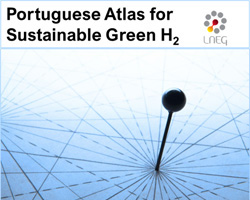Download Information About Energy Resources
Service that allows you to download free of charge various information about Energy Resources.

Portuguese Atlas of Sustainable Green H2
Year : 2022
This Atlas is a tool based on georeferenced information that follows criteria defined in the construction of scenarios to assess the suitability of the location of green hydrogen production projects regarding: (i) resources needed to power the hydrogen production processes by water electrolysis; (ii) land use constraints for the implementation of the green hydrogen production units, and (iii) factors that enhance the commercialization of the produced hydrogen. You can download the maps referring to 4 scenarios are presented: A - Diversified, B - Drought + Gas and Transport Network; C - Drought + gas consumers; D - Prospective.